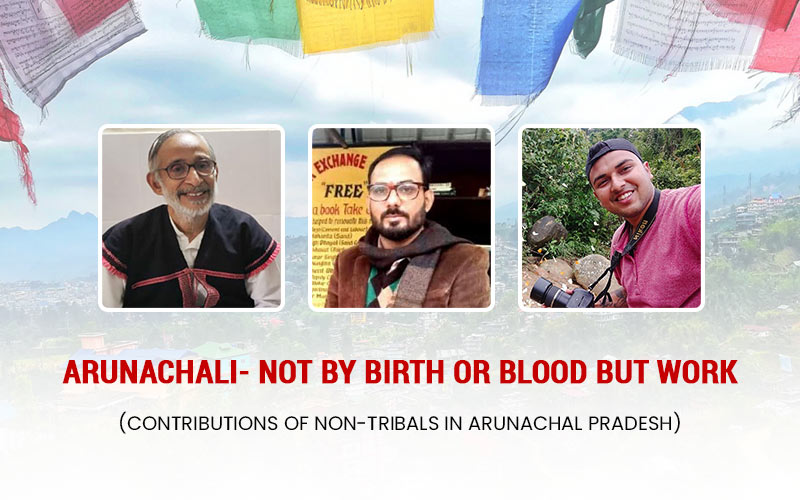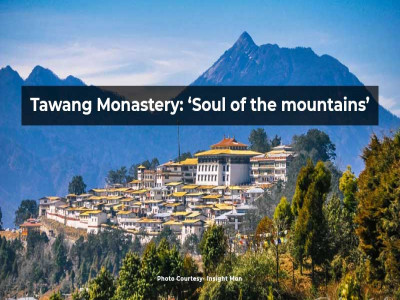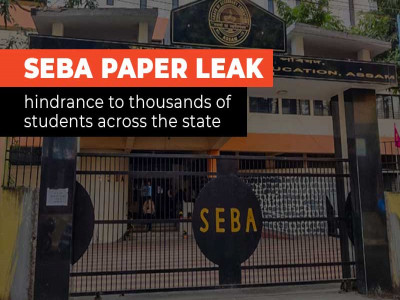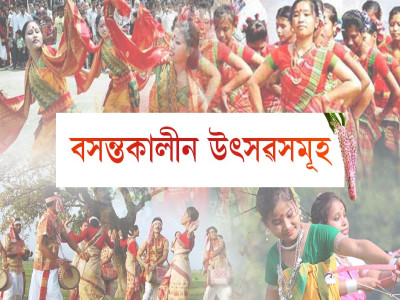
ARUNACHALI- NOT BY BIRTH OR BLOOD BUT WORK (CONTRIBUTIONS OF NON-TRIBALS IN ARUNACHAL PRADESH)
Arunachal Pradesh, a biodiversity hotspot nestled in the
easternmost corner of India, is a melting pot of 26 major tribes, over 100
sub-tribes, non-tribals, and immigrants alike. With its myriad tribes and
languages, the region presents a unique challenge for intercommunication among
its people. In this linguistic mosaic, the term "Haring" has emerged
as a common word to describe non-tribals or foreigners in the local dialect,
particularly those with darker skin tones. This term, used for ages by the Tani
clans (decendents of Abo Tani), has become a lingua franca amidst the rich
linguistic diversity of the region where interaction can often pose a challenge
due to the multitude of dialects.
The word 'Haring' carries no inherent discriminatory undertones. It is the intention and tone accompanying its use that may, at times, introduce an element of bias. Arunachal Pradesh, much like its motherland India, is a mosaic of cultures and communities, including indigenous tribal groups, non-tribals, and both legal and illegal immigrants. This diverse populace finds its roots in various motivations, ranging from tourism and business to employment and nuptial alliances. Significantly, there are numerous individuals born and raised in Arunachal Pradesh of non-tribal parentage.
Despite the prevailing global narrative of racial tensions, Arunachal Pradesh stands as an exception. Cases of racially motivated brutality against the Harings are virtually non-existent within the state, unlike other regions. However, it's noteworthy that some non-tribals have manipulated the innocence and straightforwardness of the tribal folks to their advantage, which has led to a level of resentment and bullying against Haring vendors. It's also important to mention that the racism experienced by the Mongoloid-looking tribal people of the northeast in mainland India is not mirrored in these interactions.
The state, by and large, offers an atmosphere of harmony and peaceful coexistence, despite sporadic instances of conflicts involving both tribal and non-tribal folks, it also embraces non-tribals who have made significant contributions to the social, cultural, and economic fabric of the region. Amidst this vibrant cultural milieu, there are non-tribals whose contributions to the state’s development have been commendable. This article aims to shed light on the invaluable role played by non-tribals and their enduring bond with Arunachal Pradesh.
1. Uncle Moosa: Padma Awardee for Education and Social Work
Sathyanarayan Mundayoor, affectionately known as Uncle Moosa, is an educationalist and social activist hailing from Kerala. He embarked on his journey in Arunachal Pradesh over four decades ago, leaving behind his job as a Revenue Officer in Mumbai. Uncle Moosa dedicated himself to promoting education and fostering a reading culture in the state. His remarkable efforts led to the establishment of the first community library in Etalin of Dibang Valley, which quickly expanded into a network of thirteen Bamboosa libraries across various districts. Uncle Moosa's relentless service earned him the prestigious Padma Shri in 2020, along with other accolades such as the Arunachal Governor's Silver Medal and the Dakshina-Ravunni Menon Award.
2. Roshan Upadhaya: The Butterfly Man of Arunachal Pradesh
Roshan Upadhaya, a constable from Miao in the Changlang district, has made remarkable contributions to the field of entomology. While exploring the forests of Arunachal Pradesh, he discovered a passion for butterflies and began documenting their diversity. Roshan's research led to the identification of numerous new butterfly species. His dedication and expertise earned him recognition in the India Book of Records and the Asia Book of Records. He was also awarded an Honorary Doctorate from the World Record University. Additionally, Roshan Upadhaya actively engages in social work, teaching economics to underprivileged students and imparting karate training to children through his wife's academy, the Self-Defense Academy in Miao.
3. Prakash Ghimiray: Championing Literacy through Roadside Free Libraries
Prakash Ghimiray, a social worker and entrepreneur based in Naharlagun, has transformed an illegal dumping ground into a unique initiative called the Book Exchange Centre or Road Side Library located on the roadsides in Naharlagun, Arunachal Pradesh. Unlike any typical library, this unique concept allows visitors to exchange a book with one of their own. The initiative was conceived by Prakash, a socially conscious entrepreneur who envisioned transforming an illegal dumping site into a resourceful platform for the community. Assisted by his friends and local youngsters, Prakash successfully set up this unconventional reading spot where people can choose from nearly 1000 books on diverse topics. The library has been warmly received by the locals, especially students, who are pleased with the wide array of literature available.
In conclusion, Arunachal Pradesh is a unique state where people from different cultural backgrounds coexist in harmony, exemplifying India's secular values while preserving the state's rich cultural heritage. Despite instances of conflicts, the state continues to welcome and embrace non-tribals and recognize their contributions to various fields such as education, social work, entomology, and entrepreneurship. Through the stories of Uncle Moosa, Roshan Upadhaya, and Prakash Ghimiray, we observe that these individuals have hearts that beat for the welfare of the community and the state as they strive to make an impact through their contributions. These stories urge us to recognize and embrace diversity and nurture an inclusive society, where everyone is given an equal opportunity to achieve their aspirations and contribute their best to society. Arunachal Pradesh is a prime example of how people from diverse backgrounds can come together to create a tapestry of beautiful traditions and a shared cultural heritage that will continue to enrich and inspire generations to come.
Disclaimer: The opinions expressed in this article are those of the author's. They do not purport to reflect the opinions or views of The Critical Script or its editor.

Newsletter!!!
Subscribe to our weekly Newsletter and stay tuned.

















Related Comments